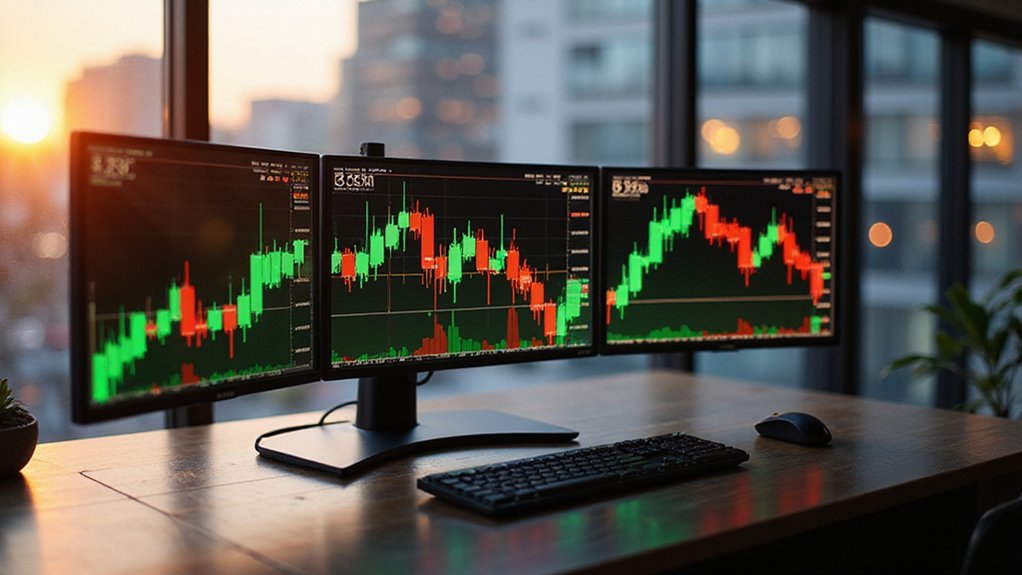While traditional stock markets have operated under the quaint notion that Amazon shares should trade during civilized hours with reasonable price movements, the cryptocurrency world has decidedly different ideas about such bourgeois constraints.
Bybit pioneered this fascinating experiment in May 2025, becoming the first crypto exchange to offer direct Amazon stock trading using USDT—because apparently, what the financial world truly needed was another layer of complexity involving stablecoins and equity derivatives. The platform’s innovation has sparked a broader trend, with major exchanges like Binance, Coinbase, OKX, and Upbit exploring similar offerings that blend traditional securities with cryptocurrency infrastructure.
The mechanics are straightforward enough: investors can trade Amazon through contracts for difference (CFDs) or tokenized stock derivatives, with entry barriers lowered to as little as $10. These platforms offer the usual crypto exchange amenities—24/7 trading, high liquidity, leverage options, and automated orders—all wrapped in the familiar comfort of multi-factor authentication and cold storage security measures. Users can buy, sell, and store cryptocurrencies in virtual wallets provided by these exchanges.
However, the price volatility tells a rather different story. Amazon stock on crypto exchanges can experience swings of up to 300%, a figure that would make traditional equity traders question their career choices. This extreme volatility stems from the peculiar cocktail of market speculation, reduced regulatory oversight, and the inherent clash between crypto and stock asset classes—a combination that produces price movements resembling a caffeinated trader’s fever dream. Unlike direct cryptocurrency investments, crypto stocks offer regulatory oversight through established financial frameworks that provide greater transparency and compliance standards.
The collision of crypto chaos and traditional equity produces price swings that would terrify even the most seasoned Wall Street veterans.
The regulatory landscape remains as clear as mud, with frameworks still developing across various jurisdictions. While established exchanges maintain licensing and robust security practices, the thinner order books characteristic of these platforms create perfect conditions for price manipulation and flash crashes. The broader trend reflects how tokenization extends beyond cryptocurrencies to traditional markets, fundamentally changing how assets are traded and accessed.
Liquidity limitations in stock tokens further exacerbate sudden price changes, turning what should be relatively stable equity positions into white-knuckle trading experiences. For investors brave enough to navigate this brave new world, careful monitoring and risk management become essential survival skills.
The technology infrastructure supporting these platforms—including Amazon’s own AWS services powering blockchain networks—provides the backbone for this financial innovation, even as traditional market participants watch with bemused fascination from the sidelines.








